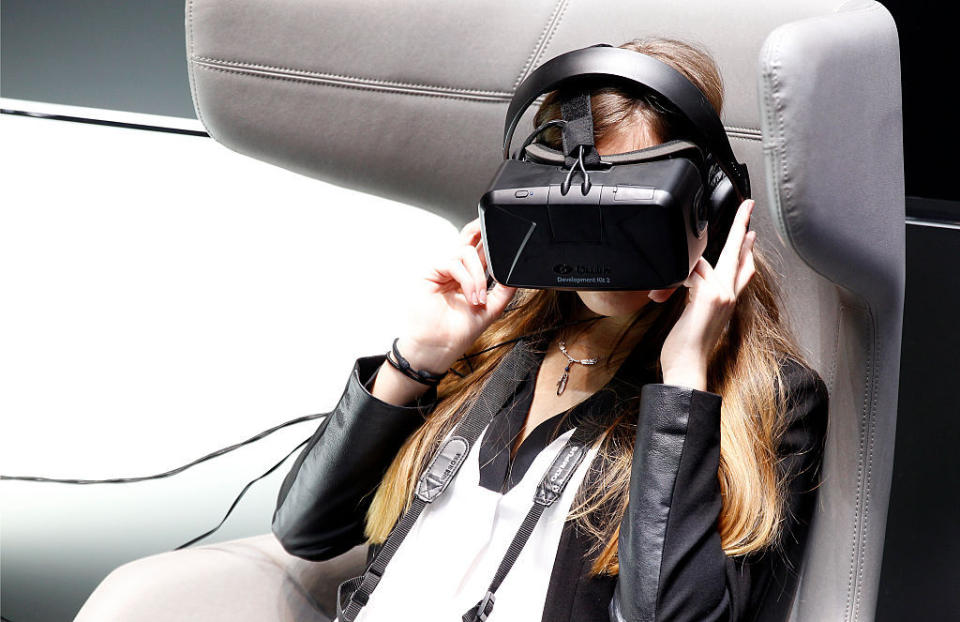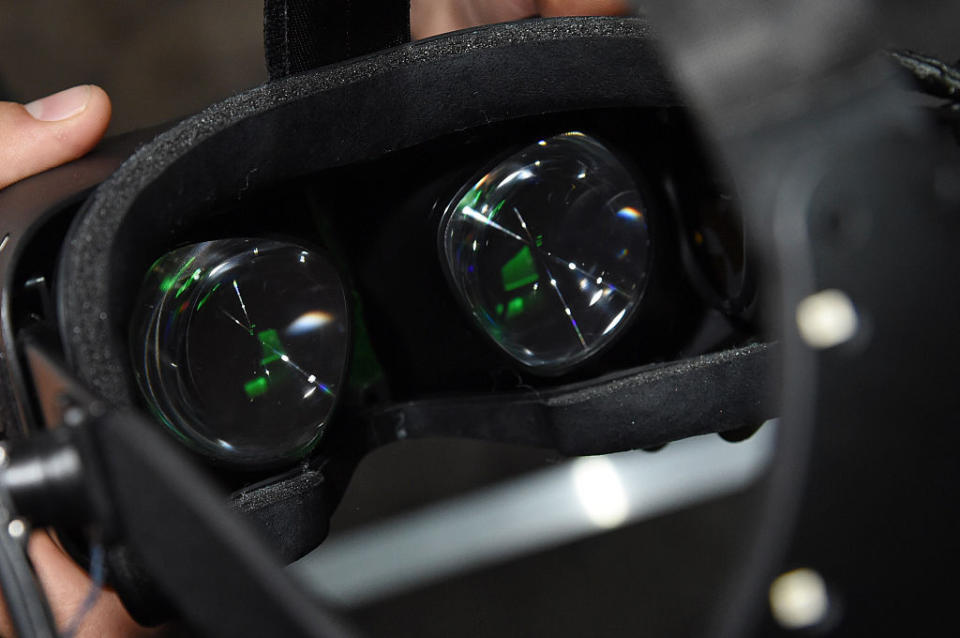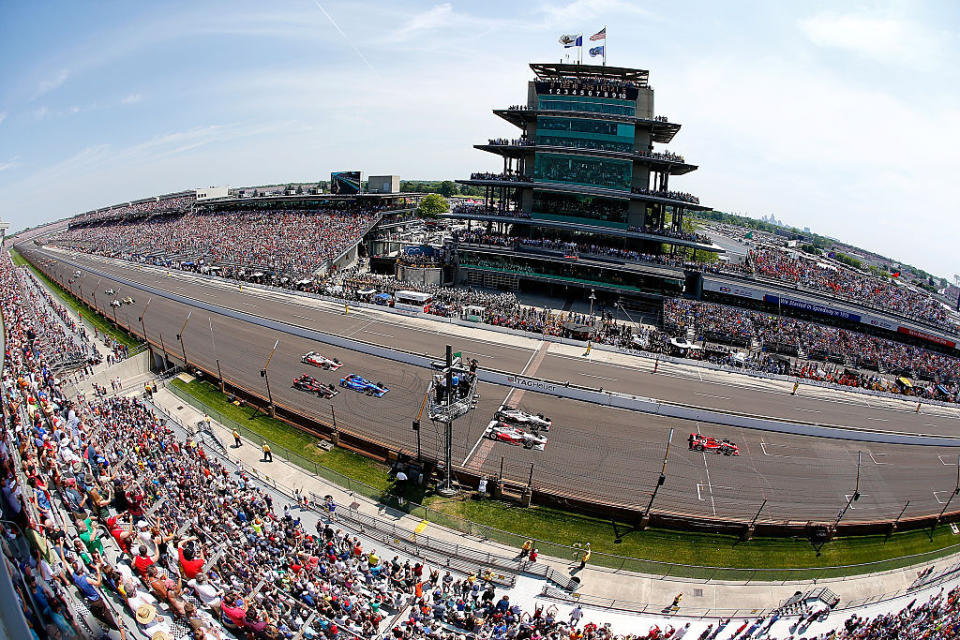Virtual Reality Will Deliver Sights, Sounds, Smells Of Auto Racing

You’re in Monaco, watching the Formula One Grand Prix. In the grandstand you’re sat next to an old college friend whom you haven’t seen in years. The sound of race cars fills the air, the warm Mediterranean breeze reeking of burning rubber and money. Moments later you’re in pit lane, witnessing a pit stop from Ferrari’s timing stand. Next, you’re aboard that very same red missile, flashing through the famed tunnel at 200 mph—the noise all-encompassing, the velocity thrilling.
In the future, virtual reality will make this possible—right from your own living room.
It’s no secret that auto racing is struggling. Both F1 and NASCAR have seen declining TV and attendance figures, sports car racing barely registers to a mainstream audience, and the Indy 500’s ratings on ABC are lower than an episode of Scandal.
Online forums are filled with suggestions to bring motorsports back into the limelight, and indeed I recently wrote about a fundamental recalibration of IndyCar racing that might help. But the sport’s true savior—peering deep into the future—could lie in the hands of a technology that has only just begun penetrating the market.
Experts predict that within half a century, the capability of virtual reality will be so realistic it will remain difficult to discern what’s real and what’s not. The goal is total immersion, or telepresence, where a person is effectively transported from their living room to someplace else—be that Paris in the fall, a spaceship on Mars, or the Daytona 500.

This transportation won’t just be visual. Jean-Louis Dautin, the director of the VR technology center CLARTE, said: “Virtual reality in 50 years is the illusion that is perfect in all senses, whereby we can do everything as if everything around us were real. That means physical sensorial feedback, impeccable audio-spatial feedback, even odors.”
Combined will be the ability to virtually interact with others, such as a friend watching from his or her couch the other side of the world. In an instance, you could be sat next to each other on the Mulsanne Straight at Le Mans, smelling the exhaust fumes (if its not all-electric) and the sausages grilling from the adjacent food truck.

How, exactly, we turn today’s VR headsets—like Oculus Rift (Sony and HTC both have versions upcoming)—into a totally immersive experience, where one can smell and to a degree feel things that are happening live across the globe remains to be seen. There’s a wealth of things that need to happen, but not long ago, the ability to Skype from an airplane would have been an impossible dream.
Facebook recently purchased Oculus for $2 billion: “Mobile is the platform of today, and now we’re also getting ready for the platforms of tomorrow,” said CEO and founder Mark Zuckerberg. “Oculus has the chance to create the most social platform ever, and change the way we work, play and communicate.”
“If the VR is done well,” says Jeremy Bailenson, from Stanford’s Virtual Human Interaction Lab, “there’s no technology—there’s no gadgets. This is not about pixels or refresh rate, it’s an experience—there’s complete mental transportation. You forget that you’re even wearing the helmet; you are just mentally transported somewhere else.”
If you have $599 and a powerful PC, you can already immerse yourself in VR. It’s not hard to imagine the vast progression that will take place over the next few decades. (The precise time it will take for virtual reality to mature is still unknown; there’s a reason William Gibson didn’t offer dates in his acclaimed novel “Neuromancer.”)

Back to today: The trouble with racing is the excitement felt in person does not translate through a TV screen—and people simply don’t care the way they once did. Racing is a visceral sport; if you take a newbie to an event, chances are they’ll love it. But attending races is expensive, and the next generation won’t make the trip off their own back. With VR, the racetrack comes to them.
Witnessing the Indy 500 from the stands is one of the most breathtaking experiences you can have: 300,000 people cheering, Jim Nabors (up until recently) singing “Back Home Again In Indiana,” the colossal cornering speeds of 225 mph, the noise reverberating around the grandstands. Unless you’ve been there, you cannot imagine what I’m describing. But in the future, that feeling—a level of exhilaration that produces goose bumps—will be intimately conveyed to viewers at home.
This is how we get people excited about racing again.
Here’s how things may look in around 50 years: Sadly, fewer people will attend races (and sporting events in general, all of which this same theory applies). Today, perhaps you’d have to pay $150 for that prime grandstand seat, plus airfare, rental car, and a hotel room. With VR, the same seat could be sold in the virtual world for $10, but to 100,000 people rather than just one. You could also purchase passes that allow you onto pit lane, where you can explore much like we can today on Google Street View, following a predetermined route. Perhaps race teams offer their own season passes, bringing you into their garages, on the timing stand, and a part of pre-race strategy meetings. The on-board helmet cameras we see today could literally allow you to ride with that driver, as if you were racing yourself.

Once upon a time the World Rally Championship legitimately rivaled F1. Today, the sport is struggling; it’s difficult to follow and hard to watch in person—you’ve got to be really keen to wander miles through a freezing forest in Wales, knee deep in mud, to wait all day and see your favorite driver flash by only once. With VR, you can be at numerous spots on the same stage. Your can huddle next to a tree with your buddy, and you can both high five after the racer rockets by, just like you might if you were really there.
“You can create an avatar of your friend,” said Andre Johnson, from the Virtual Reality Company, L.A. “They will be in that experience with you, but it’s their real voice, and it’s their real movement.“
The possibilities are endless. And the extra cash would help offset dwindling attendance fees—where the facility gets a portion of the VR ticket sales—and teams could profit from their own passes. TV viewership will also rise due to the experience, and companies can advertise more directly through VR by targeting products to specific groups of people, based on their VR profile. (Many websites do this today, filtering content via an algorithm: So, if you’re a car guy and regularly click on car-related content, you’re fed more automotive stories. On the other hand, if you’re a Kardashian fan, you’re delivered mindless crap. Brands want to ensure their ads are engaging with the right type of people.)
All of this will one day happen, right from your own home. Sure, the VR revolution will affect every sport (the NFL is already exploring similar options) and indeed every aspect of our lives will be touched by it; some experts are even predicting that in the future people will have relationships in virtual reality, including virtual sex (weird, I know).
As for racing, I believe it’s one of the sports that will benefit most from virtual reality. Few things are as electrifying in person as being trackside, but yet appear so mundane on a TV screen. If you can bring that experience to the casual viewer at home—let them live it— they might just become a diehard fan for life.

Fifty years, give or take, is a long time to wait. In the meantime, the powers-at-be will need to innovate and keep pace with the evolving way we interact and find new methods to make racing relevant again. But just imagine—watching the 2066 Monaco Grand Prix aboard a 150-foot yacht floating in the harbor, surrounded by life’s finest and more champagne than you can imagine. Sure, you won’t actually be able to drink said champagne. But your fridge is in the next room, where a mug and a bottle of Korbel await.

 Yahoo Finance
Yahoo Finance 